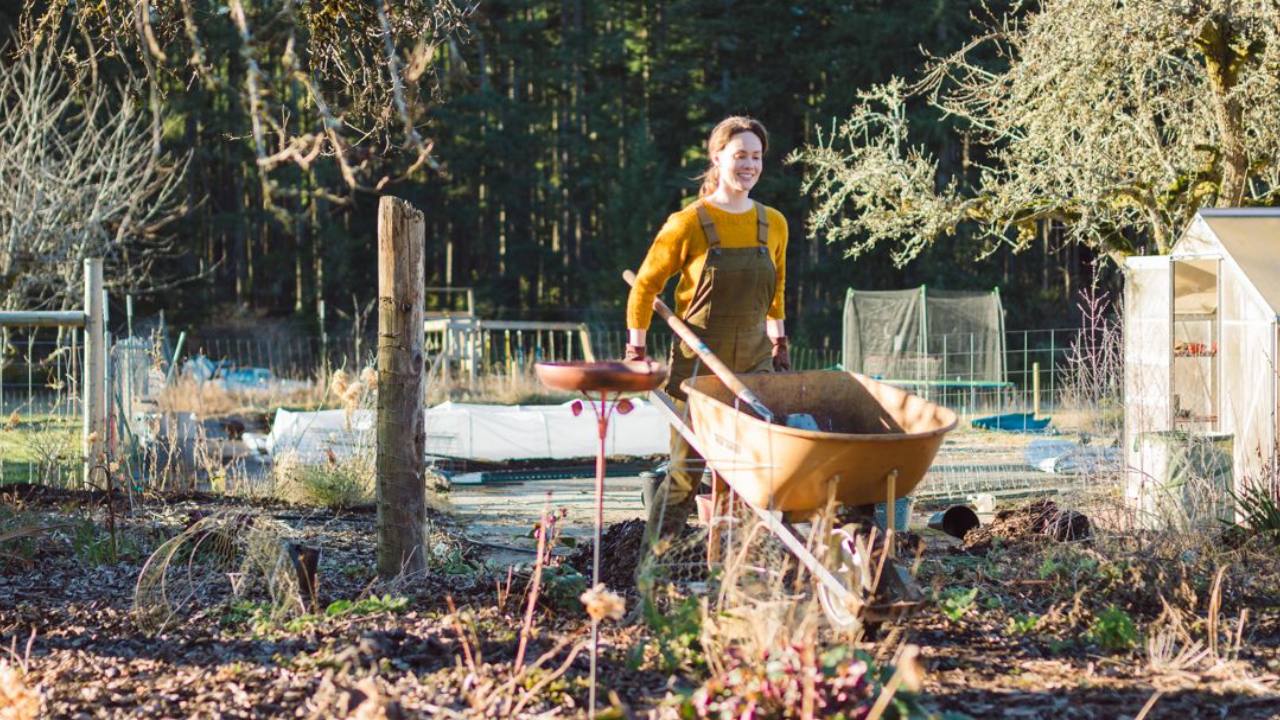Cleaning up the garden- October edition
I have been so eager for October this garden season. The shorter days, the cooler, rainier weather. While the mums and asters flourish, everything else starts to wind down.
Part of me, appalled, asks, “What?! What do you mean you’re excited for the beauty of the summer garden to fade?! What do you mean you are ‘done with the sun’ and crave the weeks of drizzle?“ And with apologies to “Summer People” and with the acknowledgement that I can’t quite explain it (other than I’ve lived in Western Washington state for most of my life & our climate is known for gray & rain), I simply love gardening in Autumn and Winter. Also hellebore, my favorite flower, starts blooming for me in late November and continues through the winter months & into the spring. It feels like magic.
Under it all, the flow of seasonal gardening runs deeply cyclical. We can’t have one season without the others. Each season feeds the next and the next and the next (even if you don't touch your garden in Winter). Cleaning up the garden in Autumn is one of my favorite ways to prepare for the next glorious Spring/Summer garden.
But I don’t simply mow things down, snipping all the spent flowers and stalks down to the ground. I leave most of my plants to over-winter in the garden. This means I don’t do much clean up with my actual plants. And I leave the garden beds themselves looking “messy.” I leave the spent eryngium, peony foliage, the gladiolus stems. I leave the rudbeckia, oregano, hydrangea, and yarrow. I leave the coneflower, phlox, columbine, alyssium, and hostas.
I leave these plants for the pollinators and insects that have burrowed their way into the stems of these plants. According to the Xerces Society (one of the organizations my business supports), studies from across the world show that insect populations are declining. Quite drastically. (This isn’t good. We need insects… Butterflies, bees, dragonflies, beetles, spiders, and invertebrates help sustain life as we know it. Read more here). I’m trying to do my own small part, with what I have, to support the insects that live in my garden and around my home.
More than the insects & pollinators, I also leave my plants for the birds so they have seeds to eat in the winter. The plants I do cut down, I leave in a pile at the back of my garden, in hopes that some of the critters can survive. In the spring, after temperatures have warmed, I will compost them.
So if I don’t cut down plants, what “clean up” do I do?
First, a final weeding. Ideally, I’ve kept up on weeding so this isn’t that big of a deal. But sometimes there are sections that I have let go a bit too far and will need a make over.
Second, I apply compost and mulch to areas that didn’t thrive as well as I would have liked. Or areas where the soil looks a bit bare. This is an ongoing process for me. Each season I love adding compost from my worm bins as well as wood chips we get for free from chip drops. It’s so important to add nutrients back into your soil: plants can take a lot! And adding wood chips helps keep the organic matter cycle going and will help with water retention AND help guard the roots of my more tender perennial plants that might otherwise freeze during the colder months.
Then, I start to organize my potting bench, greenhouse, and tools. This looks like taking care of all the leftover pots and plants. Often, I will combine all the dirt to use next year or fill some pots. This year, a friend gave me some mint plants including chocolate and orange mint (yum!) and I knew I needed to plant them in pots (seriously don’t plant mint in the ground unless you want it to TAKE OVER). So I filled three pots with the leftover soil, mixed in some compost, and et voilà, a cleaned up greenhouse with now three new potted plants. Win-win.
This Autumn season is also a time to prep new garden spaces if I want to expand the garden or create a new one. So I will Sheet Mulch everything. Here is a Guide to Sheet Mulching called “Create New Garden Spaces and Deal with Weeds the Low Effort Way.” It’s free and details every step I take when I start the process of a new garden.
My last bit of “clean up” is prepping for & planting early Spring flowers: I love planting Spring Blooming Bulbs this time of year. Truly one of my favorite things to do all year.
Remember, a garden isn’t complete without insects and without soil teeming with microbes. Making sure we’re gardening in a way that supports all the creatures, critters, and animals is a helpful way to ensure our gardens will thrive long-term.
Wishing you the best in your garden & in life,
Hannah
Rooted Cottage Gardening
If you’re new here, Hi! I’m Hannah, the gardener behind Rooted Cottage Gardening. I love connecting with beginning & intermediate gardeners, sharing everything I do in my garden, & helping you decrease overwhelm. I focus on gardening for the bees & other pollinators, building beautiful soil, and growing for beauty blooms in every season (yes even winter!).
In this Newsletter, I share everything I do in my gardens after over a decade of growing loads of veggies, fruit, & perennial flowers. I designed my Cottage Garden to be a cut flower garden and I harvest & make bouquets each week for my community.
No AI; Everything I share has been written/created by me.





Responses